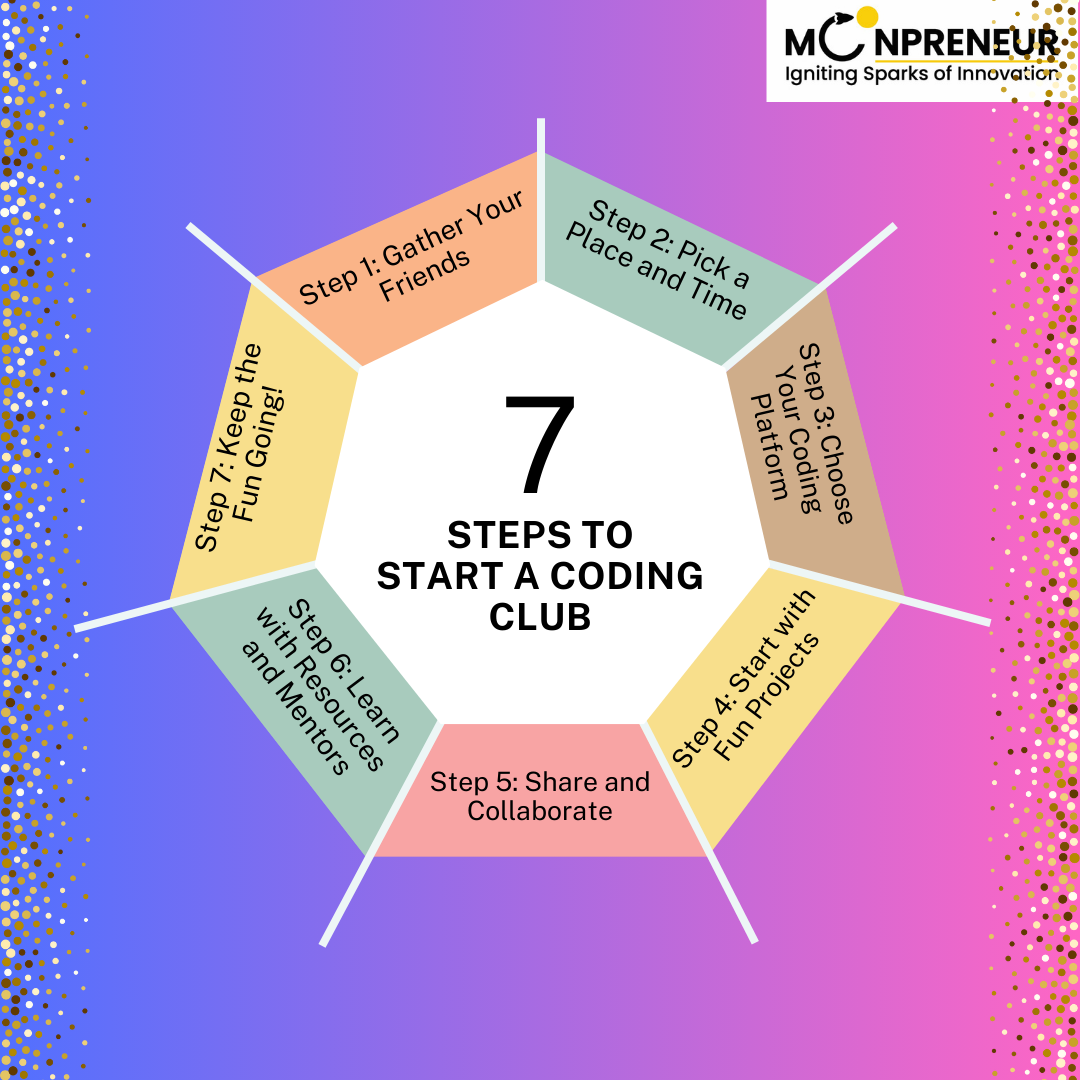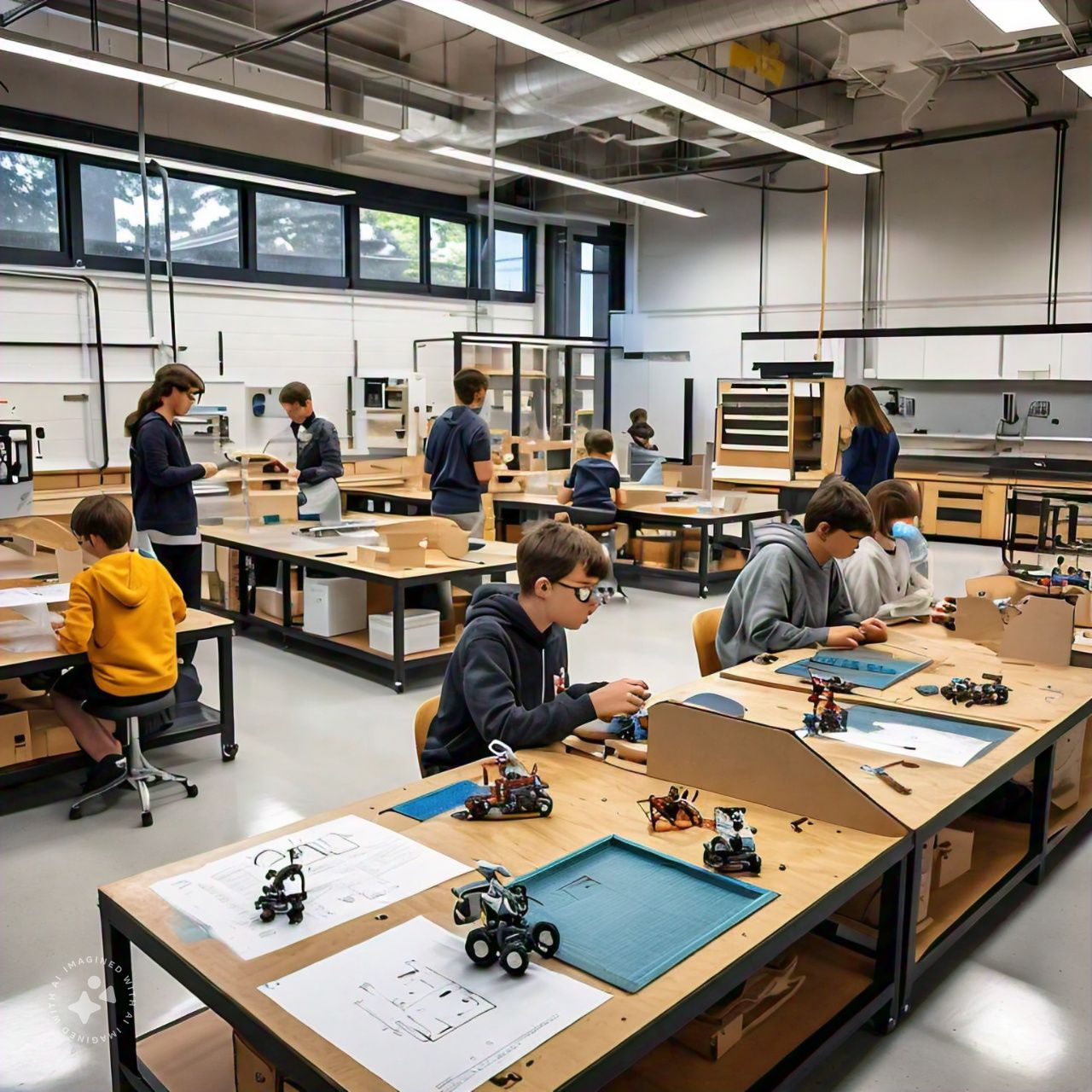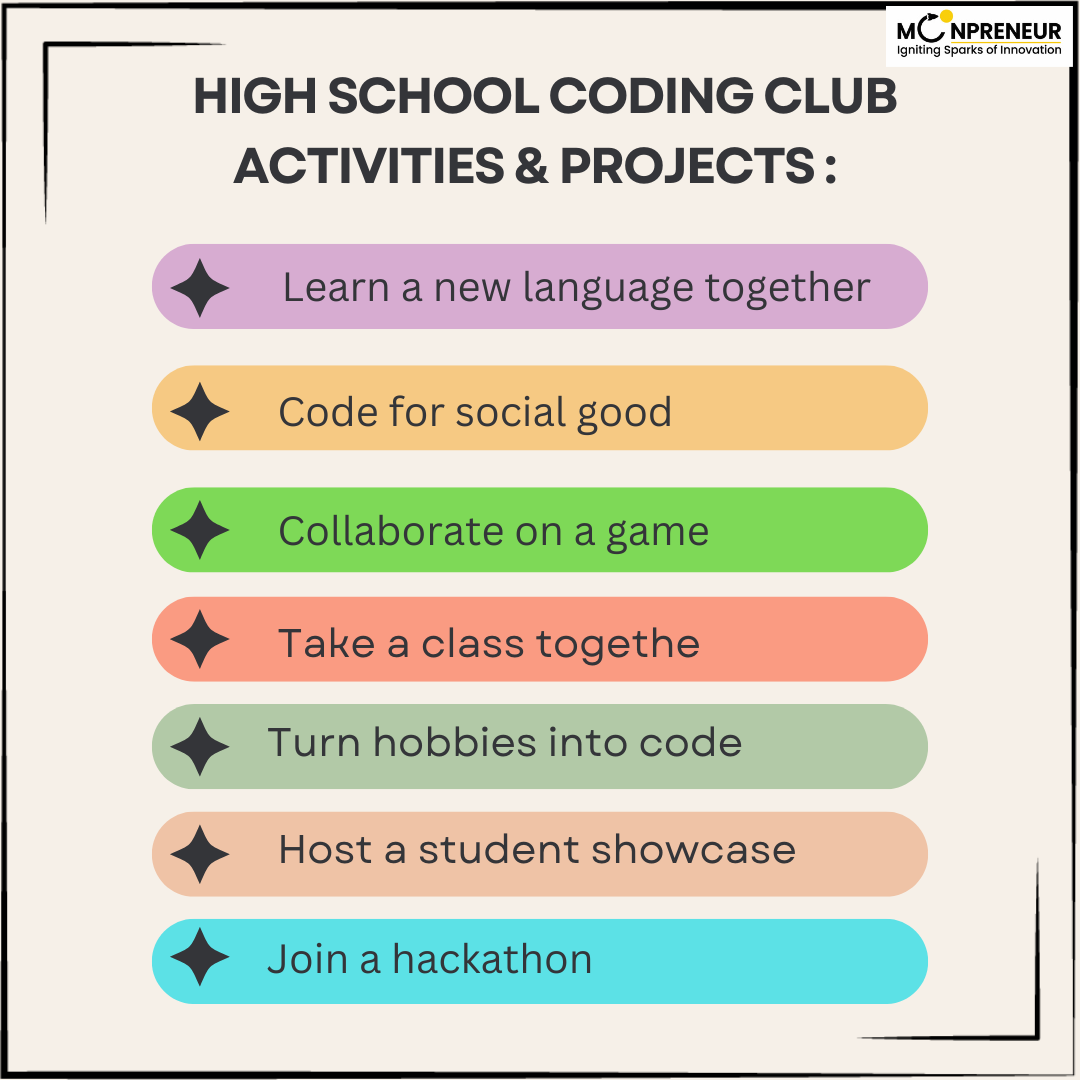Introduction: Why Start a Coding Club?
Coding is becoming an essential skill for the future. It encourages creativity, problem-solving, and logical thinking—all while being super fun! For kids, starting a coding club is not only a great way to learn but also to collaborate with friends, feel connected, and develop a love for technology.
Whether you’re just starting or already know some coding basics, creating your coding club is a journey where you’re in the driver’s seat. This step-by-step guide will help you get started and make learning fun, giving you the power to shape your club as you wish!

Step 2: Pick a Place and Time
Consider having different levels of activities or projects to cater to everyone’s skills. You’ll need a regular place and time to meet. It could be after school in the library, a classroom, or even online if you prefer virtual meetings. Make sure everyone knows the schedule so they can attend regularly.
Important: Ensure you have access to computers or laptops. If meeting in person, find a space with good Wi-Fi.
Step 1: Gather Your Friends
To start a coding club, the first thing you’ll need is members! Talk to your friends or classmates who are interested in technology, gaming, or just curious about how apps or websites are made. Remember, diversity in your group can bring different perspectives and ideas, making your learning experience more enriching. You don’t need a big group; even a small team can work together and learn.
Pro Tip: If you want more members, ask your teacher or school to make an announcement or create a flyer to hang around your school.

Step 4: Start with Fun Projects
To keep your coding club exciting, start with small, fun projects that everyone can enjoy. Here are some ideas:
a. Create a Simple Game: Platforms like Scratch allow you to easily create simple games. Try creating a maze game in which players have to guide a character to the finish line.
b. Build a Website: Learn HTML and CSS to create a website about your favorite hobby or your coding club itself!
c. Animate a Story: Use Scratch or Tynker to animate a short story using code.
Pro Tip: Start with step-by-step tutorials, and as members become more confident, encourage them to create their own projects from scratch.
Step 3: Choose Your Coding Platform
For beginners, platforms like Scratch are not just excellent, they’re a blast! They make learning the basics of coding a thrilling adventure through fun and interactive projects. With scratch, you can create games, stories, and animations by simply dragging and dropping code blocks, turning coding into a game itself.
If you and your friends already know some coding, you can explore languages like Python or JavaScript. These languages open up a wide range of possibilities, from creating websites to building games and apps.
Pro Tip: For beginners, start with Scratch, a visual and easy-to-grasp platform that will make you feel like a coding pro in no time. Once you’re comfortable, transition to Python or JavaScript for more advanced projects and greater flexibility in coding, and feel the sense of achievement as you master new skills.

Step 5: Share and Collaborate
Coding is more fun when it’s done together! In each club meeting, share what you’ve created. It could be a new game, an animation, or even a website. Help each other by giving tips and ideas to improve the project. Remember, collaboration is not just key to learning faster, it’s also about building a supportive community where everyone can thrive.
Bonus Idea: Host a mini “hackathon,” where everyone works together to solve a coding challenge or build a project in a short amount of time!
Step 6: Learn with Resources and Mentors
There are plenty of free resources online to help your coding club grow. Websites like Code.org, Khan Academy, and Moonpreneur offer tutorials, challenges, and interactive lessons.
You can also reach out to coding experts or teachers who can mentor your group. Sometimes, having someone with more experience can boost your learning and help when you’re stuck on a tricky problem.
Pro Tip: Leverage free resources like Code.org and Khan Academy for structured learning, and don’t hesitate to invite a mentor. Their guidance can fast-track your progress and help you tackle complex coding challenges.
Step 7: Keep the Fun Going!
As you continue your coding club, always try to mix learning with fun. Play coding-related games, organize competitions, or even take breaks to watch tech-related videos together. Keeping the atmosphere light and engaging will help everyone stay excited about coding.
Future Ideas: As your skills grow, think about building more significant projects like mobile apps, coding robots, or even participating in coding competitions!
High School Coding Club Activities & Projects :

If you’re part of a coding club or thinking of starting one, here are seven fun and engaging activities to take your club to the next level:
1. Learn a new language together: Explore new languages like Python, Scratch, or Roblox. Try out free coding classes to broaden your skills.
2. Coding for social good is a powerful way to make a difference. Meta’s ‘Engineer for the Week’ program lets students learn coding basics and create socially conscious projects with feedback from real developers. It’s a chance to apply your coding skills to real-world problems and see the impact of your work.
3. Collaborate on a game: Work together as a club to build fun projects, such as a Rock, Paper, Scissors game or other coding tutorials.
4. Grow together as a group: Enroll in coding courses in areas like Web Dev, Machine Learning, or Python, and learn as a team. Experience the joy of shared learning and the power of collaboration.
5. Express your individuality through code: Encourage advanced members to create projects based on their interests, like games about sports or anime. Experience the joy of turning personal passions into innovative projects.
6. Host a student showcase: Display your club’s work in a showcase for your school or community to celebrate achievements.
7. Join a hackathon: Compete in hackathons to solve problems, build team spirit, and network with industry professionals.
Here is one case study that will help you to understand about robotics club idea
Background: In 2022, a group of high school students passionate about robotics and technology formed the Robics Club with the goal of providing hands-on learning in STEM fields. The club began with just 10 members but quickly grew as interest in robotics spread across the school.
Objectives:
- To teach students the fundamentals of robotics, coding, and engineering.
- To foster teamwork and problem-solving skills through group projects.
- To participate in national robotics competitions.
Challenges: Initially, the club faced challenges with funding for equipment and finding mentors to guide students. Members also had limited knowledge about complex robotics technologies.
Solutions:
- Funding: The club secured sponsorships from local tech companies and used school resources to access robotics kits.
- Mentorship: They invited alums studying engineering and technology to serve as mentors.
- Learning Platform: They used beginner-friendly platforms like Scratch for coding and gradually moved to advanced languages like Python and JavaScript.
Outcomes:
- The club participated in the First Robotics Competition and won a regional award.
- Membership increased to over 40 students, with a diverse group of students learning and contributing to projects.
- Members reported improved problem-solving, teamwork, and technical skills.
Conclusion
Starting a coding club is a great way to learn, have fun, and bond with friends over a shared interest in technology. With the right resources, a little creativity, and teamwork, your coding club will be a place for learning and fun for everyone involved!
So, gather your friends, pick up your computers, and get coding!
Want to make your child future-ready with Robotics? Moonpreneur offers a tailor-made program. Reserve a spot in our free 60-minute workshop today and introduce them to the amazing world of robotics and innovations!
You may also like to read:
How to Start a Robotics Club
Starting a robotics club is a fantastic way to connect with fellow enthusiasts, learn new skills, and participate in competitions. This blog outlines essential steps, including market analysis, acquiring resources, and fostering collaboration. Joining a robotics club promotes creativity, teamwork, and real-world tech applications. Sign up for Moonpreneur’s free workshop today!
Unique Club Ideas
Moonpreneur offers innovative ideas for high school clubs, including Sustainability Squad, Tech Innovators, and Creative Cooking. These clubs promote skills like teamwork, creativity, and critical thinking. Moonpreneur’s Innovator Program enhances education with hands-on learning in AI, robotics, and coding, preparing students for future careers. Sign up for a free workshop today!
Frequently Asked Questions
Ans: The cost of coding clubs varies depending on the instructor and location. Online clubs, which are often more affordable, may even offer free trials. School-based clubs are typically free or have a nominal fee. In-person clubs outside of school may be more expensive, depending on the location and instructors.
Ans: You have several options to find a coding club near you. You can search online for clubs nearby or inquire at your child’s school. Local libraries or Facebook groups can also be helpful for finding in-person clubs. When considering online options, look for trusted websites with good reviews and trial periods, which offer the flexibility to explore before committing.
Ans: If your child isn’t initially interested in coding, there are ways you can help spark their curiosity. Try linking coding to their hobbies. For example, if they love games, encourage them to create one. You can also introduce them to inspiring people like Katherine Johnson or Alan Turing. Free trials can let them explore coding before you commit to a paid club.
Ans: Absolutely! Parents can learn coding alongside their kids through books, online resources, or free blog posts. Whether you borrow books from the library or find beginner materials online, this shared learning experience not only helps you understand coding but also provides quality time with your child.


























It would be great to see a section about using open-source coding platforms like GitHub. It would teach kids real-world collaboration and version control, which are essential skills in tech today.
The guide has some helpful insights, but it feels like it’s missing information on how to sustain a coding club long-term. Adding tips on maintaining member interest and managing funds or resources for equipment would make this even more practical. A list of potential sponsorship sources or fundraising ideas would really help ensure the club’s longevity.